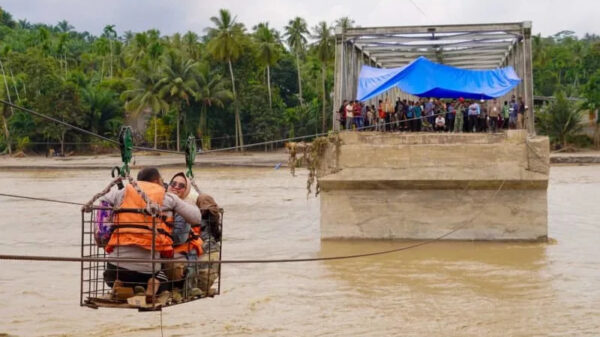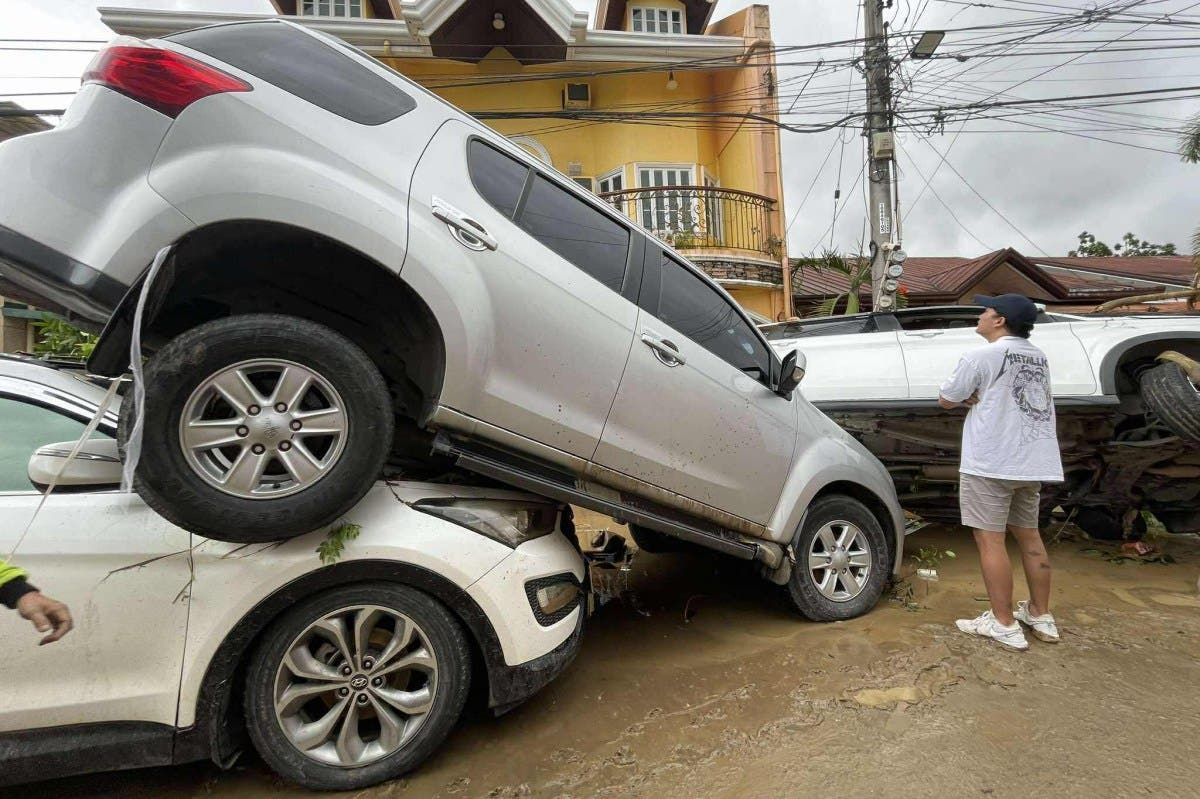UPDATE: Typhoon Kalmaegi has tragically claimed the lives of more than 50 people in the Philippines, predominantly from devastating floods that swept through central provinces. This catastrophic event was confirmed by officials on Wednesday, just over a month after a 6.9 magnitude earthquake struck, resulting in nearly 80 fatalities.
The urgency of this situation cannot be overstated. The Philippines is one of the world’s most disaster-prone nations, facing approximately 20 typhoons annually. The impact of Kalmaegi has been severe, particularly in the central province of Cebu, which was hit on Tuesday after the typhoon surged in from the Pacific, unleashing torrential rains and powerful winds.
Visual evidence from social media shows the harrowing aftermath: cars swept away by floodwaters and individuals wading through murky depths. Political leaders, including Cebu provincial governor Pamela Baricuatro, have expressed outrage over the apparent failures of flood control measures. “What happened to the flood control projects?” Baricuatro questioned in a Facebook post, citing concerns over substandard preparations.
In a desperate attempt to save lives, the government successfully evacuated 175,000 people to safety in shelters, according to President Ferdinand Marcos Jr.. Among the deceased are six military personnel who tragically lost their lives when their helicopter crashed during a relief mission on the southern island of Mindanao.
As Kalmaegi continues its destructive path, hundreds of flights have been canceled, and ferries and fishing boats remain grounded. As of early Wednesday, the storm was wreaking havoc on the northern part of Palawan island and is projected to make landfall in central Vietnam by late Thursday, prompting authorities there to prepare for its arrival.
In light of the recent earthquake on September 30, which also severely impacted Cebu, the region is grappling with compounded disasters. Baricuatro assured the public, “We continue to do everything we can. Search and rescue operations are ongoing, and relief packs are being distributed.”
The human toll of Kalmaegi is staggering, and the emotional weight of these events is felt across the nation. As the recovery efforts unfold, the urgent need for effective flood management and disaster preparedness remains a pressing concern.
What happens next? The storm’s relocation toward Vietnam means that the region is bracing for further impact. Authorities are on high alert as they monitor the situation closely. The road to recovery for the Philippines is just beginning, and the community’s resilience will be tested in the days to come.
Stay tuned for further updates as this developing story unfolds.






































































